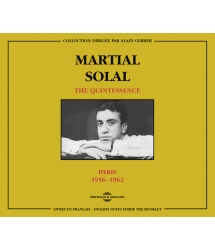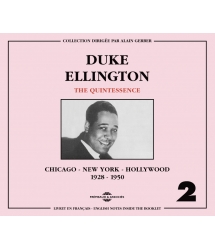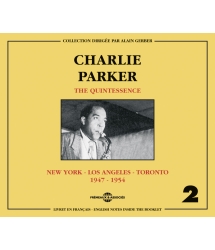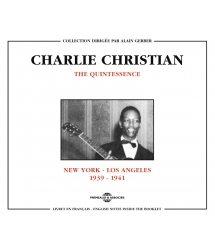- Our Catalog
- Philosophy
- Philosophers of the 20th century and today
- History of Philosophy (PUF)
- Counter-History and Brief Encyclopedia by Michel Onfray
- The philosophical work explained by Luc Ferry
- Ancient thought
- Thinkers of yesterday as seen by the philosophers of today
- Historical philosophical texts interpreted by great actors
- History
- Books (in French)
- Social science
- Historical words
- Audiobooks & Literature
- Our Catalog
- Jazz
- Blues
- Rock - Country - Cajun
- French song
- World music
- Africa
- France
- Québec / Canada
- Hawaï
- West Indies
- Caribbean
- Cuba & Afro-cubain
- Mexico
- South America
- Tango
- Brazil
- Tzigane / Gypsy
- Fado / Portugal
- Flamenco / Spain
- Yiddish / Israel
- China
- Tibet / Nepal
- Asia
- Indian Ocean / Madagascar
- Japan
- Indonesia
- Oceania
- India
- Bangladesh
- USSR / Communist songs
- World music / Miscellaneous
- Classical music
- Composers - Movie Soundtracks
- Sounds of nature
- Our Catalog
- Youth
- Philosophy
- News
- How to order ?
- Receive the catalog
- Manifesto
- Dictionnary











- Our Catalog
- Philosophy
- Philosophers of the 20th century and today
- History of Philosophy (PUF)
- Counter-History and Brief Encyclopedia by Michel Onfray
- The philosophical work explained by Luc Ferry
- Ancient thought
- Thinkers of yesterday as seen by the philosophers of today
- Historical philosophical texts interpreted by great actors
- History
- Books (in French)
- Social science
- Historical words
- Audiobooks & Literature
- Our Catalog
- Jazz
- Blues
- Rock - Country - Cajun
- French song
- World music
- Africa
- France
- Québec / Canada
- Hawaï
- West Indies
- Caribbean
- Cuba & Afro-cubain
- Mexico
- South America
- Tango
- Brazil
- Tzigane / Gypsy
- Fado / Portugal
- Flamenco / Spain
- Yiddish / Israel
- China
- Tibet / Nepal
- Asia
- Indian Ocean / Madagascar
- Japan
- Indonesia
- Oceania
- India
- Bangladesh
- USSR / Communist songs
- World music / Miscellaneous
- Classical music
- Composers - Movie Soundtracks
- Sounds of nature
- Our Catalog
- Youth
- Philosophy
- News
- How to order ?
- Receive the catalog
- Manifesto
- Dictionnary
ELLA FITZGERALD
Ella Fitzgerald
Ref.: FA5155
Artistic Direction : JACQUES LUBIN
Label : Frémeaux & Associés
Total duration of the pack : 1 hours 55 minutes
Nbre. CD : 2
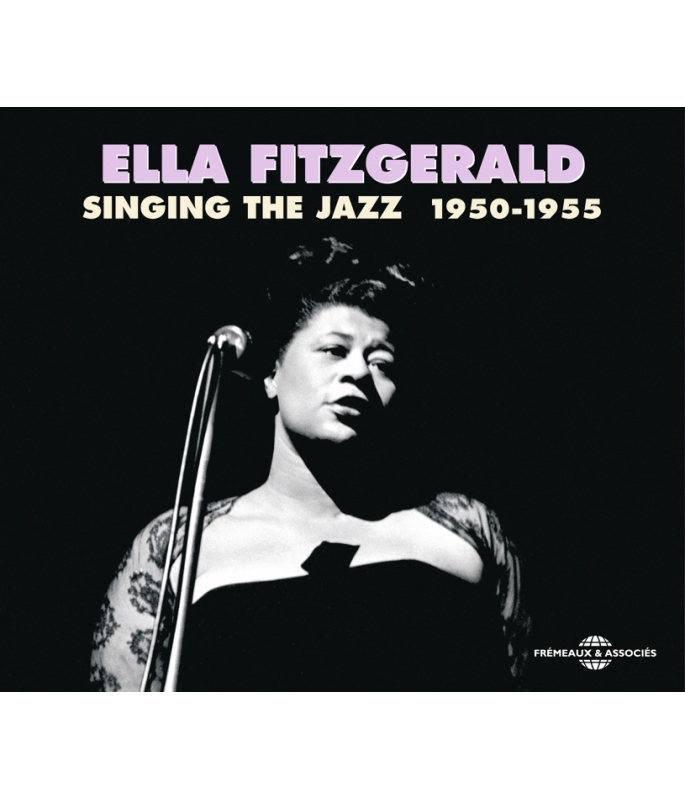
ELLA FITZGERALD
- - * * * * JAZZMAN
- - RECOMMANDÉ PAR JAZZ NOTES
- - SÉLECTION JAZZ HOT
ELLA FITZGERALD
“I never knew how good our songs were until I heard Ella Fitzgerald sing them”. Ira GERSHWIN
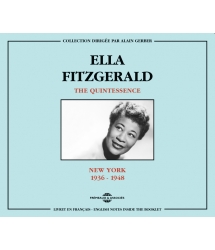
NEW YORK 1936 - 1948
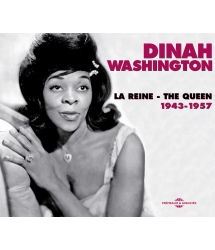
LA REINE - THE QUEEN - 1943-1957
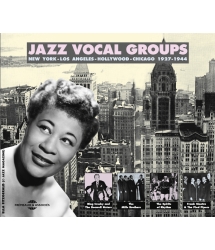
NEW-YORK - LOS ANGELES - HOLLYWOOD - CHICAGO 1927 -...



-
PisteTitleMain artistAutorDurationRegistered in
-
1LOOKING FOR A BOYELLA FITZGERALDGEORGE GERSHWIN00:03:091950
-
2MY ONE AND ONLYELLA FITZGERALDGEORGE GERSHWIN00:03:161950
-
3HOW LONG HAS THIS BEEN GOIN ONELLA FITZGERALDGEORGE GERSHWIN00:03:171950
-
4I VE GOT A CRUSH ON YOUELLA FITZGERALDGEORGE GERSHWIN00:03:151950
-
5BUT NOT FOR MEELLA FITZGERALDGEORGE GERSHWIN00:03:141950
-
6SOONELLA FITZGERALDGEORGE GERSHWIN00:02:471950
-
7SOMEONE TO WATCH OVER MEELLA FITZGERALDGEORGE GERSHWIN00:03:161950
-
8MAYBEELLA FITZGERALDGEORGE GERSHWIN00:03:291950
-
9I M GLAD THERE IS YOUELLA FITZGERALDPAUL MADEIRA00:03:111954
-
10BABY WHAT ELSE CAN I DOELLA FITZGERALDWALTER HIRSH00:03:461954
-
11MAKIN WHOOPEEELLA FITZGERALDGUS KAHN00:03:041954
-
12UNTILL THE REAL THINGS COME ALONGELLA FITZGERALDL E FREEMAN00:02:591954
-
13PEOPLE WILL SAY WE RE IN LOVEELLA FITZGERALDOSCAR HAMMERSTEIN II00:03:131954
-
14PLEASE BE KINDELLA FITZGERALDSAUL CHAPLIN00:03:321954
-
15IMAGINATIONELLA FITZGERALDJOHNNY BURKE00:02:391954
-
16MY HEART BELONGS TO DADDYELLA FITZGERALDCOLE PORTER00:02:401954
-
17YOU LEAVE ME BREATHLESSELLA FITZGERALDRALPH FREED00:03:021954
-
18NICE WORK IF YOU CAN GET ITELLA FITZGERALDGEORGE GERSHWIN00:02:381954
-
19STARDUSTELLA FITZGERALDMITCHELL PARISH00:03:561954
-
PisteTitleMain artistAutorDurationRegistered in
-
1DON T CHA GO WAY MADELLA FITZGERALDILLINOIS JACQUET00:03:201950
-
2SOLID AS A ROCKELLA FITZGERALDB HILLIARD00:02:591950
-
3SMOOTH SAILINGELLA FITZGERALDARNETT COBB00:03:061951
-
4THERE NEVER WAS A BABY LIKE MY BABYELLA FITZGERALDBETTY COMDEN00:02:501951
-
5GOODY GOODYELLA FITZGERALDJOHNNY MERCER00:02:251952
-
6MR PAGANINI IF YOU CAN T SING IT YOU LL HAVE TO SWELLA FITZGERALDRICHARD00:05:101952
-
7ANGEL EYESELLA FITZGERALDEARL BRANT00:02:541952
-
8EARLY AUTUMNELLA FITZGERALDJOHNNY MERCER00:03:141952
-
9BLUE LOUELLA FITZGERALDIRVING MILLS00:02:481953
-
10MOANIN LOWELLA FITZGERALDRALPH RAINGER00:02:391953
-
11LULLABY OF BIRDLANDELLA FITZGERALDB Y FORSTER00:02:511955
-
12THANKS FOR THE MEMORIESELLA FITZGERALDRALPH RAINGER00:02:261955
-
13IT MIGHT AS WELL BE SPRINGELLA FITZGERALDOSCAR HAMMERSTEIN II00:02:411955
-
14YOU LL NEVER KNOWELLA FITZGERALDMACK GORDON00:03:051955
-
15I CAN T GET STARTEDELLA FITZGERALDIRA GERSHWIN00:03:061955
-
16BETWEEN THE DEVIL AND THE DEEP BLUE SEAELLA FITZGERALDHAROLD ARLEN00:02:141955
-
17THAT OLD BLACK MAGICELLA FITZGERALDJOHNNY MERCER00:02:301955
-
18OLD DEVIL MOONELLA FITZGERALDBURTON LANE00:02:581955
-
19LOVER COME BACK TO MEELLA FITZGERALDSIGMUND ROMBERG00:02:011955
ELLA FITZGERALD
ELLA FITZGERALD
SINGING THE JAZZ 1950-1955
In Memoriam Ella Fitzgerald (1917-1996)
Ella Fitzgerald est, avec Billie Holiday, Sarah Vaughan et Dinah Washington, l’une des plus grandes chanteuses que le jazz de l’époque dorée ait produit. Elle est née le 25 avril 1917 (et non 1918) à Newport News, dans l’état de Virginie. Orpheline à 15 ans, elle remporte le premier prix au concours d’amateurs du Harlem Opera House en 1934. Bardu Ali, animateur de Harlem, la remarque et la présente à Chick Webb, dont l’orchestre fait les beaux soirs du temple de la danse, le fameux Savoy Ballroom. Non sans réticence de la part du chef, elle est engagée et ne tarde pas à devenir la vedette et la mascotte de l’orchestre, de 1935 à 1939. A la mort de Chick Webb, en juin 1939, à l’âge de 32 ans, par solidarité et fraternité, elle décide de maintenir et de faire vivre l’équipe qui a tant fait pour elle. Aidée par deux musiciens de l’orchestre, le saxophoniste ténor Teddy McRae et le trompettiste et arrangeur Dick Vance, elle prend la direction de la troupe. Depuis 1936, Ella est sous contrat d’enregistrement avec la compagnie “Decca”. En 1946, le producteur Norman Granz est son impresario. Ainsi, Ella se trouve associée aux tournées et spectacles du “Jazz At The Philharmonic”. Granz n’aura de cesse que de lui faire quitter “Decca” pour la prendre sous contrat sur sa propre marque “Verve”. Ce sera chose faite en 1956. Entre temps, Ella épouse le contrebassiste Ray Brown en 1948 et adopte un garçon, Ray Junior. Elle continue de mener une carrière internationale exemplaire, gagnant ainsi une énorme popularité auprès d’un public délirant, sans scandale, sans drogue, sans séjours pénitentiaires. Ella possède avant tout un sens aigu du tempo, du timming, ce qui lui permet de se promener avec aise et décontraction tant sur des interprétations à tempo rapide que sur des ballades et des blues dans lesquels elle est tout aussi remarquable, magistrale de musicalité doublée d’une technique hors du commun, n’excluant ni la fantaisie, ni l’émotion, marques incontournables de son immense talent. Au fil des ans, son succès ne cesse de grandir. Divorcée de Ray Brown en 1952, son plus grand regret est de n’avoir pas eu d’autres enfants malgré les obligations que le métier exige. Sur le tard, dans les années 1980, elle souffrira d’un diabète sournois et tenace qui la rongera impitoyablement et cruellement. Elle nous quitte à l’âge de 79 ans, le 15 juin 1996 à Los Angeles, auréolée de toute sa gloire, nous laissant de merveilleux moments d’une musique chère à notre cœur.
Depuis votre départ vous nous avez laissé
Madame grande peine en nos cœurs attristés
Les Belles années 1950-1955
Lorsqu’Ella quitta la firme “Decca” en 1955 pour signer son contrat avec Norman Granz, ce dernier prétexta d’une production mineure et médiocre sur cette marque. Rien n’est plus faux comme argument. On en jugera avec le contenu de ce coffret.
CD n° 1 : Accompagnée par le délicat et subtil piano d’Ellis Larkins, les huit premiers titres sont l’œuvre des frères George et Ira Gershwin, des chansons extraites de la partition musicale de comédies créées sur Broadway dans les années 1920 et 1930 : “Tip Toes”, “Funny Face”, “Rosalie”, “Treasure Girl”, “Girl Crazy”, “Strike Up The Band”, “Oh Kay !”. Accompagner une chanteuse (ou un chanteur) est un art difficile et ingrat. Ellis Larkins est un artiste en la matière. Dans ces titres il n’y a pas un pianiste qui accompagne une chanteuse, mais deux musiciens qui dialoguent, chacun avec son instrument, ici une voix, là un clavier. Échange et complicité, efficacité et simplicité. Le choix des thèmes participe aussi de la recherche de la simplicité. Ils ont servi et servent encore de substrat harmonique à des générations de musiciens et constituent ce que l’on peut appeler la “song culture” américaine. En ce sens, ce sont des “evergreen”. “Makin’ Whoopee” est l’air principal d’un show éponyme de Florenz Ziegfeld, le roi de Broadway. Ce refrain plein d’humour a été créé par Eddie Cantor en 1929. “People Will Say We’re in Love” est un duo venu de la comédie musicale Oklahoma ! (1943) qui connut un succès considérable avec 2248 représentations et tint l’affiche pendant plus de cinq ans. Les heureux auteurs étaient Richard Rogers et Oscar Hammerstein II. “My Heart Belongs To Daddy”, enregistré une première fois par Ella, alors dans les rangs de l’orchestre de Chick Webb en 1939 fut également un succès pour Marilyn Monroe, mais beaucoup plus tard ! “Nice Work If You Can Get It” de George et Ira Gershwin est une chanson du film Damsell In Distress de George Stevens (1937) avec Joan Fontaine et Fred Astraire. Ce fut un grand succès pour ce dernier.
CD n° 2 : Ella Fitzgerald est accompagnée par l’efficace soutien de l’orchestre de Sy Oliver (également arrangeur). “Don’t Cha Go ‘Way Mad” (“Ne vas pas te mettre en colère”) est aussi connu sous le titre de “Black Velvet”, composé par Jimmy Mundy pour le cheval de course dont Illinois Jacquet était propriétaire. Al Stillman en a écrit les amusantes paroles. On ne sait pas, malgré toutes sortes de discographies consultées, qui donne la réplique à Ella dans ce petit duo plein d’humour. Sy Oliver est l’auteur des interventions de trompette bouchée. “Solid As A Rock” est une composition en forme de spiritual. Le climat musical est dans le même esprit (saint) d’une autre composition de Sy Oliver datant de 1941, “Yes Indeed” au répertoire de l’orchestre de Tommy Dorsey. “Smooth Sailing” titre bien choisi par Arnett Cobb pour sa partition, un riff (Arnett Cobb, saxophoniste ténor dans l’orchestre de Lionel Hampton est un expert en la matière) qui swingue relaxe, sans paroles, ce qui permet à Ella la plus grande fantaisie dans son improvisation “scat”, bien soutenue à l’orgue par Bill Dogget avec les Ray Charles Singers – qui n’ont rien à voir avec Ray Charles “The Genius”. “There Never Was A Baby Like My Baby” de Jule Styne, Adolph Green et Betty Comden, revuistes et auteurs à succès tant à la scène qu’à l’écran, fait partie du programme musical du film Two On The Aisle. “Mister Paganini If You Can’t Sing It, You’ll Have To Swing It” enregistré une première fois par Ella Fitzgerald alors dans les rangs de l’orchestre de Chick Webb, en 1936. Cette nouvelle version est remarquable par l’aisance qu’Ella nous offre avec cette amusante fantaisie. “Early Autumn” : cette composition de Ralph Burns est un titre de référence pour le saxophoniste Stan Getz alors au sein de la formation de Woody Herman en 1947. La version d’Ella est toute aussi captivante que celle de Stan Getz. “Moan In Low” chanson dans le film de John Huston Key Largo de 1948, chantée par l’actrice Claire Trevor personnifiant une chanteuse alcoolique déchue sous l’air narquois du méchant gangster joué par Edward G. Robinson. C’est une très belle mélodie de Howard Dietz. “Lullaby Of Birdland” célèbre thème composé par George Shearing en 1952, joué dans le monde entier. La meilleure vente en France fut l’enregistrement du groupe vocal “Les Blue Stars”. “Thanks For The Memories” dû à la plume du fameux tandem Robin-Rainger fut créée par Bob Hope et Shirley Ross dans le film Big Braodcast 1938 de Mitchel Leisen. “It Might As Well Be Spring” composé par Richard Rodgers, était dans le film State Fair en 1945. Cette chanson, très poétique, connut un grand succès en France sous le titre “C’est le printemps” chantée par Jean Sablon, qui écrivit des paroles françaises. L’orchestre d’André Previn accompagne Ella Fitzgerald. “You’ll Never Know” de Harry Warren et Mack Gordon, créée par l’actrice Alice Fay dans le film Hello Frisco, remporta l’Oscar de la meilleure chanson. Mais c’est le crooner Dick Haymes qui fit les meilleures ventes. Tout cela date de 1943. “That Old Black Magic” composée en 1942 par Johnny Mercer avec des paroles du célèbre Harold Arlen fut chantée par le non moins célèbre Bing Crosby dans le film Here Comes The Waves, film de Mark Sandrich en 1945. La chanson fut nommée aux Academy Award. C’est l’orchestre de Bennie Carter qui accompagne Ella. “Old Devil Moon” est un extrait de la comédie musicale Finian’s Rainbow sur Broadway en 1947 puis dans le film du même nom réalisé par Francis Ford Coppola en 1968 avec Fred Astaire et Petula Clark en vedettes. Bennie Carter a écrit un arrangement qui sonne. Faisons le point : ces enregistrements des ultimes sessions d’Ella Fitzgerald pour “Decca” en 1955, médiocres et sans intérêts ? Vraiment ?
Jacques LUBIN, mars 2006
© 2006 GROUPE FRÉMEAUX COLOMBINI SAS
Sources : Nat SHAPIRO, Popular Music – Adrian Press, Inc. New York, 1964. / John RUSSELL TAYLOR & Arthur JACKSON, The Hollywood Musical, Martin Secker & Warburg Limited – London, 1971.
english notes
In Memoriam Ella Fitzgerald (1917-1996)
Ella Fitzgerald was, along with Billie Holiday, Sarah Vaughan and Dinah Washington, one of the greatest ladies to step forth during the golden era of jazz. She was born on 25 April 1917 (and not 1918) in Newport News, Virginia. Orphaned at the age of fifteen, she won first prize in a talent contest in the Harlem Opera House in 1934. Spotted by Bardu Ali, a Harlem presenter, she was in turn presented to Chick Webb, whose band was firing the temple of dance, the Savoy Ballroom. After some hesitation from the boss, she was hired and was shortly promoted to being the star and mascot of the band from 1935 to 1939. When Chick Webb died in June 1939, at the age of 20, she decided to shoulder and sustain the team which had already done so much for her. Assisted by two of the orchestra’s musicians, tenor saxist Teddy McRae and trumpeter and arranger Dick Vance, she stood at the helm. As from 1936 Ella was under contract with Decca. In 1946, producer Norman Granz became her impresario and she thus joined the circuit of tours and shows in the ‘Jazz at the Philharmonic’ series. Granz was adamant in her leaving Decca to sign up with his label, Verve, which she did in 1956. Meanwhile, she married bassist Ray Brown in 1948 and adopted a son, Ray Junior. Her exemplar international career continued, winning her much popularity among throngs of fans, and was never tarnished by scandal, narcotics or penitentiaries. She shone above all for her acute sense of tempo and timing and felt at home in up-tempo numbers as well as in ballads and blues where she was equally remarkable, being musically and technically peerless and generous in her emotions and fantasies. All these factors added to her immense talent. As the years went by her success continued to increase. She divorced Ray Brown in 1952, and her biggest regret was not having more children, despite her work-related obligations. In her autumn years, in the eighties, she suffered from diabetes which mercilessly took a toll on her life. She left us at the age of 79 on 15 June 1996 in Los Angeles, still wreathed in glory and bequeathing marvellous moments of music.
“Her recordings will live forever …” Tony Bennett
The Good Years 1950-1955
When Ella left Decca in 1955 to sign up with Norman Granz, the producer wrongly underestimated the quality of this label, believing the quality to be mediocre. This boxed set proves him wrong.
CD N° 1: Accompanied by the delicate and subtle piano of Ellis Larkins, the first eight titles were signed by the Gershwin brothers, George and Ira, and are songs from Broadway musicals in the twenties and thirties: Tip Toes, Funny Face, Rosalie, Treasure Girl, Girl Crazy, Strike up the Band and Oh Kay!. Accompanying a singer is no easy task, but Ellis Larkins was an expert in this field. In these titles, we do not hear a pianist accompanying a singer, but two musicians conversing, each using his or her instrument – a voice or a keyboard. Exchange and complicity, efficiency and simplicity. The choice of tunes also contributes to this desire for simplicity. The selection has been and will be used by generations of musicians and belong to the American song culture. Makin’ Whoopee is the theme tune from the eponymous show by Florenz Ziegfeld, the king of Broadway and was created by Eddie Cantor in 1929. People Will Say We’re in Love is a duo from the musical Oklahoma! (1943) by Richard Rogers and Oscar Hammerstein II, which was a remarkable hit which ran for over five years. My Heart Belongs to Daddy was first recorded by Ella while with Chick Webb in 1939, and the song was to later become a hit for Marilyn Monroe. Nice Work if You Can Get It by George and Ira Gershwin is a song from the movie Damsell in Distress by George Stevens (1937) with Joan Fontaine and Fred Astaire.
CD N° 2: Ella Fitzgerald is efficiently backed by the band of Sy Oliver (also arranger). Don’t Cha Go ‘Way Mad is also known as Black Velvet composed by Jimmy Mundy for Illinois Jacquet’s racehorse. Al Stillman signed the humorous lyrics. However, despite all research, we still don’t know who Ella’s partner in this duet was. The spiritual, Solid as a Rock is built around the same frame as another composition by Sy Oliver in 1941, Yes, Indeed, featured in Tommy Dorsey’s band. The aptly named Smooth Sailing is free of lyrics, leaving Ella space for her scat improvisations. There Never Was a Baby Like My Baby by Jule Styrne, Adoph Green and Betty Comden, known for their work both for the stage and screen, comes from the film Two on the Aisle. Mister Paganini If You Can’t Sing It, You’ll Have to Swing It was first cut by Ella Fitzgerald in 1936 while with Chick Webb. Her ease is remarkable in this new version. Early Autumn, a composition by Ralph Burns was a key title for saxophonist Stan Getz when he was a member of the Woody Herman set up in 1947. Ella’s version is equally moving. Moanin’ Low, a song from Hon Huston’s movie Key Largo in 1948 is a very pretty tune signed by Howard Dietz. Lullaby of Birdland, the celebrated composition of George Shearing in 1952, has been played the world over. Thanks for the Memories, written by the famous duo Robin-Rainger was created by Bob Hope and Shirley Ross in Mitchel Leisen’s film Big Broadcast 1938 It Might as Well Be Spring composed by Richard Rodgers, was featured in the movie State Fair in 1945. André Previn’s orchestra accompanies Ella Fitzgerald. You’ll Never Know by Harry Warren and Mack Gordon, a creation by actress Alice Fay in the film Hello Frisco was awarded the Oscar for the best song. That Old Black Magic composed in 1942 by Johnny Mercer with lyrics by Harold Arlen was sung by Bing Crosby in Here Comes the Waves, a Mark Sandrick movie in 1945. The song was nominated for the Academy Awards. Ella is backed by the Bennie Carter band. Old Devil Moon is taken from the Broadway musical Finian’s Rainbow in 1947 and then the film bearing the same title by Francis Ford Coppola in 1968 starring Fred Astaire and Petula Clark.
English adaptation by Laure WRIGHT
© 2006 GROUPE FRÉMEAUX COLOMBINI SAS
DISCOGRAPHIE
CD 1
Ella Fitzgerald (vocal), accompagnée par Ellis Larkins (piano). New York 11.09.1950 :
1. Looking For A Boy, de la comédie musicale “Tip Toes”, 1925 (George et Ira Gershwin) n° 76823.
2. My One And Only, de la comédie musicale “Funny Face”, 1927 (George et Ira Gershwin) n° 76824.
3. How Long Has This Been Goin’ On, de la comédie musicale “Rosalie”, 1928 (George et Ira Gershwin) n° 76825.
4. I’ve Got A Crush On You, de la comédie “Treasure Girl”, 1928 (George et Ira Gershwin) n° 76826.
Les mêmes. New York, 12.09.1950 :
5. But Not For Me, de la comédie musicale “Girl Crazy”, 1930 (George et Ira Gershwin) n° 76834.
6. Soon, de la comédie musicale “Strike Up The Band”, 1930 (George et Ira Gershwin) n° 76835.
7. Someone To Watch Over Me, de la comédie musicale “Oh Kay !”, 1926 (George et Ira Gershwin) n° 76836.
8. Maybe, de la comédie musicale “Oh Kay !”, 1926 (George et Ira Gershwin) n° 76837.
Les mêmes. New York 29.03.1954 :
9. I’m Glad There Is You (Jimmy Dorsey – Paul Madeira) n° 86087.
10. Baby, What Else Can I Do ? (Gerald Marks – Walter Hirsh) n° 86088.
11. Makin’ Whoopee !, du film “Whoopee !”, 1930 (Walter Donaldson – Gus Kahn) n° 86090.
12. Untill The Real Things Comes Along (M. Holiner – A. Nichols – S. Cahn – S. Chaplin – L.E. Freeman) n° 86091.
13. People Will Say We’re In Love, de la comédie musicale “Oklahoma !” (Richard Rodgers – Oscar Hammerstein II) n° 86092.
Les mêmes. New York 30.03.1954
14. Please Be Kind (Gus Kahn – Saul Chaplin) n° 86093.
15. Imagination (Jimmie Van Heusen – Johnny Burke) n° 86094.
16. My Heart Belongs To Daddy (Cole Porter) n° 86095.
17. You Leave Me Breathless (Frederick Hollander – Ralph Freed) n° 86096.
18. Nice Work If You Can Get It, du film “Damsell In Distress”, 1937 (George et Ira Gershwin) n° 86097.
19. Stardust (Hoagy Carmichael – Mitchell Parish) n° 86098.
CD 2
Ella Fitzgerald (vocal), accompagnée par l’orchestre de Sy Oliver, avec un partenaire non identifié en duo. New York 02.02.1950.
1. Don’t Cha Go ‘Way Mad (Al Stillman – Jimmy Mundy – Illinois Jacquet) n° 75082.
Les mêmes moins le chanteur masculin, plus un groupe vocal. New York 06.03.1950.
2. Solid As A Rock (Mann – Hilliard) n° 75938.
Ella Fitzgerald (vocal), accompagnée par Bill Doggett (hammond organ), Hank Jones (piano), Everett Barksdale (electric guitar), Arnold Fishkind (bass), Johnny Blowers (drums), with the Ray Charles Singers (vocal group). New York, 26.06.1951.
3. Smooth Sailing (Arnett Cobb) n° 81215.
Ella Fitzgerald (vocal), accompagnée par l’orchestre de Sy Oliver. New York 18.07.1951.
4. There Never Was A Baby Like My Baby, du film “Two On The Aisle” (Jule Styne – Adolph Green – Betty Comden) n° 81288.
Les mêmes. New York 25.02.1952.
5. Goody Goody (Johnny Mercer) n° 82322.
Les mêmes. New York 26.06.1952.
6. Mr Paganini If You Can’t Sing It You’ll Have To Swing It (Sam Coslow – Lambert – Richard) n° 83010.
7. Angel Eyes (Matt Dennis – Earl Brant) n° 83012.
8. Early Autumn (Ralph Burns – Woody Herman – Johnny Mercer) n° 83013.
Les mêmes. New York 13.02.1953.
9. Blue Lou (Edgar Sampson – Irving Mills) n° 83952.
Ella Fitzgerald (vocal), accompagnée par John Scott Trotter et son orchestre. Los Angeles 31.12.1953.
10. Moanin’ Low, du film “Key Largo”, 1948 (Howard Dietz – Ralph Rainger) n° L7519.
Ella Fitzgerald (vocal) accompagnée par Sy Oliver et son orchestre. New York 04.06.1955.
11. Lullaby Of Birdland (George Shearing – B.Y. Forster) n° 86356.
Ella Fitzgerald (vocal), accompagnée par André Previn et son orchestre. Los Angeles 01.04.1955.
12. Thanks For The Memories, du film “Big Broadcast 1938”, 1938 (Leo Robin – Ralph Rainger) n° L8280.
13. It Might As Well Be Spring, du film “State Fair”, 1945 (Richard Rodgers – Oscar Hammerstein II n° L8281.
14. You’ll Never Know, du film “Hello, Frisco Hello !”, 1943 (Harry Warren – Mack Gordon) n° L8282.
15. I Can’t Get Started (Vernon Duke – Ira Gershwin) n° L8283.
Ella Fitzgerald (vocal), accompagnée par Bennie Carter et son orchestre. Los Angeles 27.04.1955.
16. Between The Devil And The Deep Blue Sea (Ted Koehler – Harold Arlen) n° L8362.
17. That Old Black Magic, du film “Here Comes The Waves”, 1945 (Harold Arlen – Johnny Mercer) n° L8362.
18. Old Devil Moon, de la comédie musicale “Finian’s Rainbow”, 1947 (E.Y. Harburg – Burton Lane) n° L8364.
19. Lover Come Back To Me (Oscar Hammerstein II – Sigmund Romberg) n° L8365.
CD ELLA FITZGERALD © Frémeaux & Associés (frémeaux, frémaux, frémau, frémaud, frémault, frémo, frémont, fermeaux, fremeaux, fremaux, fremau, fremaud, fremault, fremo, fremont, CD audio, 78 tours, disques anciens, CD à acheter, écouter des vieux enregistrements, albums, rééditions, anthologies ou intégrales sont disponibles sous forme de CD et par téléchargement.)
